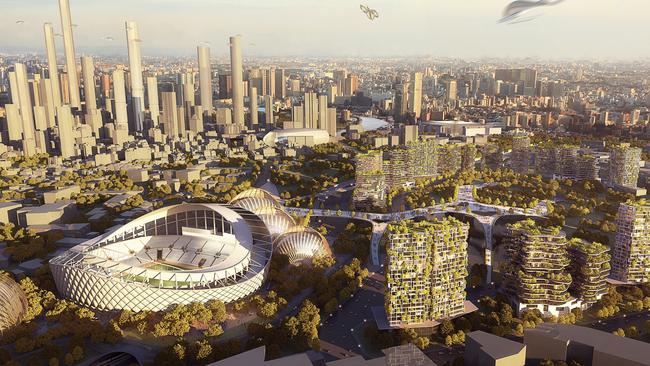Demographer Bernard Salt predicts Brisbane will ‘scramble’ over next decade into 5km communities
A demographer has compared Brisbane to a fried egg when predicting how the metropolis could change in the next decade. SEE HOW.
QLD News
Don't miss out on the headlines from QLD News. Followed categories will be added to My News.
Brisbane will “scramble” itself into 5km communities in the next decade as remote working and revitalised satellite cities “energise the suburbs,” according to demographer Bernard Salt.
Mr Salt will tell an Urban Development Institute of Australia event next week that southeast Queensland development has been too focused on inner Brisbane and changing habits post-pandemic would see more people working, shopping and relaxing within 20 minutes of home.
Mr Salt is warning Brisbane’s CBD-centric development had left it resembling a fried egg with unsustainable levels of congestion leading into its ‘yolk’ – or the CBD.

“The fried egg model is not a good model for city development in the 21st century,” Mr Salt said.
“The logic was that the CBD offered the premium experience in terms of office work,’ he said.
“With the coming of the coronavirus, something quite profound has happened.”
Mr Salt said the number of people working from home had remained flat in Australian censuses between 1996 and 2016, but predicted the pandemic would see a dramatic uptick in this statistic in coming years.
“The proportion of people working from home has not altered from five per cent over 25 years,” he said.
“Will it go back to five per cent? I say no it won’t.”.

Mr Salt said more people working from home would “spread the love” to suburban businesses and less people travelling more than 20 minutes, or 5km, from their homes.
“What you’re going to see is an activation, an energising of suburbia,” he said.
“The reason why Australians will buy this is that it contributes to lifestyle.”
Urban Development Institute of Australia QLD chief executive Kirsty Chessher-Brown said a 200 per cent increase in city-to-regional migration had already happened since the COVID-19 pandemic began.
“These shifts are why conversations about the long-term vision for our cities and suburbs is critical to remaining resilient and to supporting a healthy circular economy,” Ms Chessher-Brown said.
Other cities like Sydney have embraced such a multi-hub model in recent decades, with secondary CBDs such as Chatswood and Parramatta now becoming major employment centres.
Southeast Queensland Council of Mayors director Peter Flannery, who is also the mayor of Moreton Bay, said the pandemic had begun to shift the way people worked.
“We need centres that are well connected with fast and efficient local and regional transport,” he said.
Cr Flannery said a southeast Queensland city deal was needed to help “major investment in new businesses, jobs and economic opportunities.”





